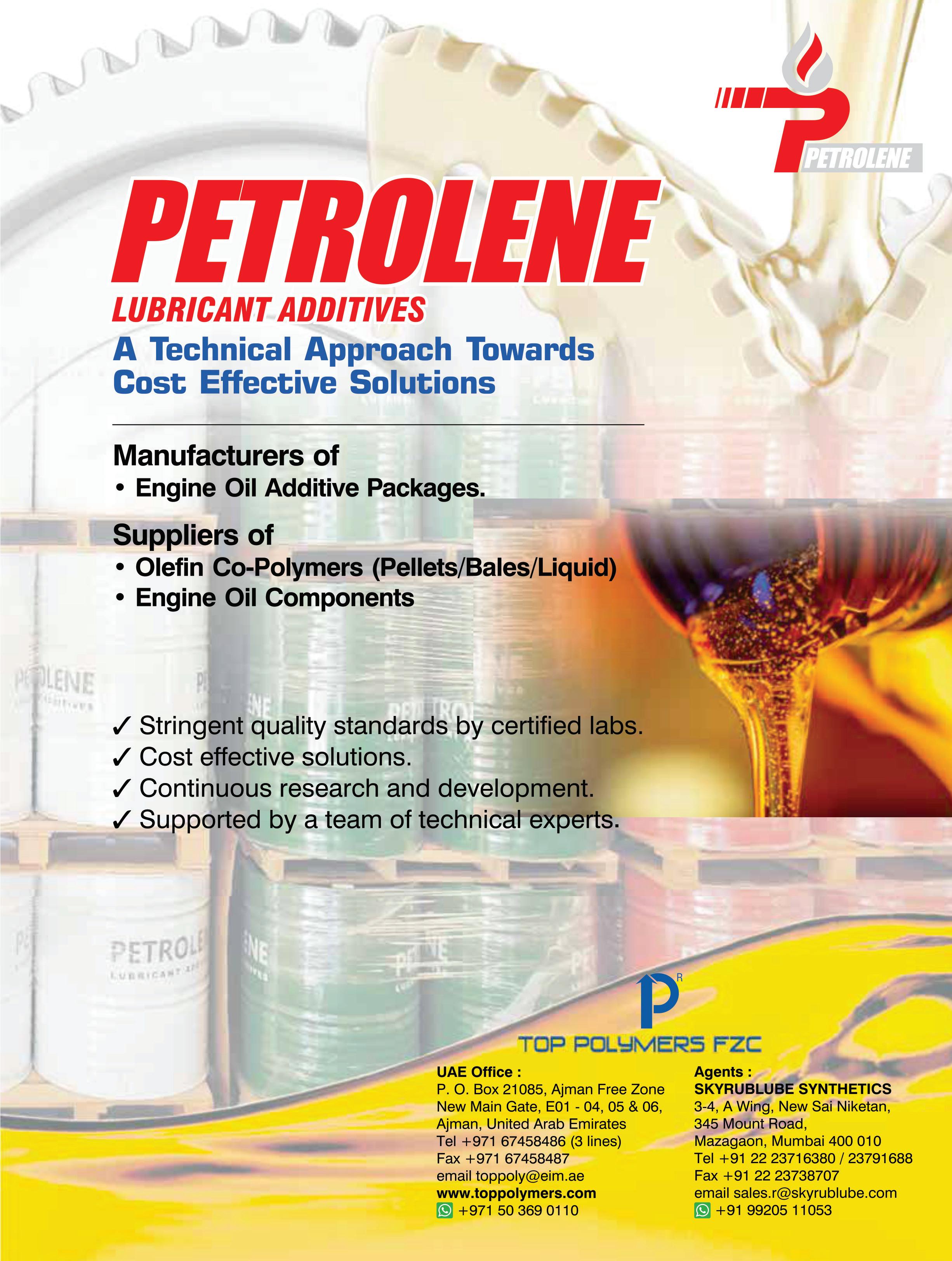
14 minute read
Energy Conservation, Health & Environment
Bennett Fitch | Noria Corporation ENERGY CONSERVATION, HEALTH & ENVIRONMENT
Factor: E3M
Advertisement
Understanding and Managing Oil Leaks
Small leakers are often the biggest risk, “ We all know leaks make a mess. Why do they keep happening? How do we know if a leak is something to be concerned about or if it is just commonplace for plant equipment? Well, given that rotating equipment and lubricated simply because equipment are practically they are more likely to go synonymous, oil leaks can be more common than we would like. Thus, understanding the unnoticed risks associated with an oil leak is or without important. While preventing leaks all together is desirable, it’s often much concern not achievable. Therefore, we afforded to them.” must be ready to reduce the leaks to an allowable amount based on variables of risk. For now, we’ll focus on oil leaks, although much of what will be mentioned could also apply to grease leaks. Any time oil escapes the lubrication system (sump, piping, etc.) and enters the external surroundings, this is an external leak. We are often aware of this, as there is visual evidence of the oil dripping out onto other components and forming a puddle on the floor. However, another type of leak occurs when unwanted oil seeps between internal chambers inside a lubrication system.
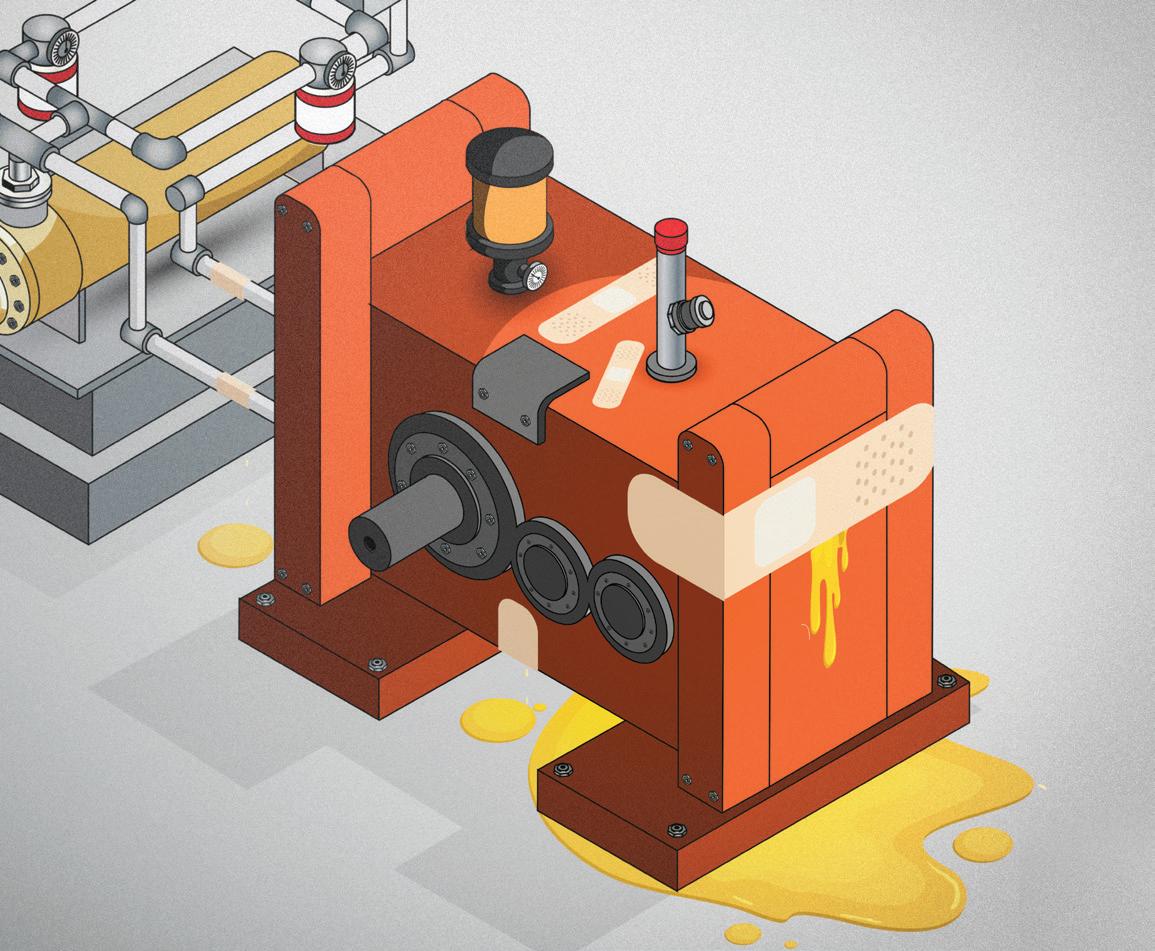
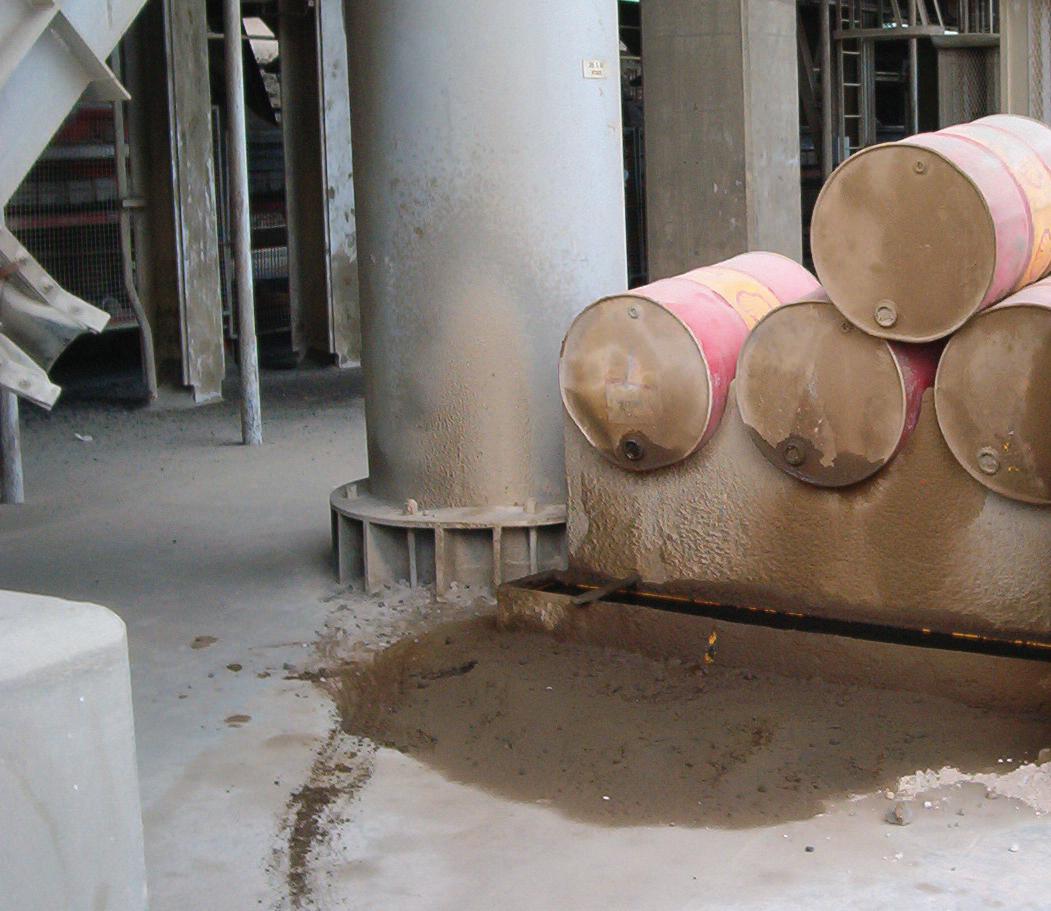
This is called an internal leak. Not many consider internal leaks at all, much less the risks associated with them. This is largely because of the lack of evidence. Unless we are monitoring pressure gauges or operational movements closely, these internal leaks may go unnoticed.
But regardless of the type of leak, what is considered normal? Is there any amount of leakage that is allowable? When should a leak be taken seriously and corrected? Is this a maintenance activity that is largely reactive or can steps to be taken to be more proactive?
Leaks are something I often inspect for and help identify through Noria’s Lubrication Program Development (LPD). During the first phase of LPD, an assessment is performed and aligned to the 40 Factors of the Ascend™ methodology (see noria.com/ ascend). One of these factors is Leakage Management (E3M). After a plant undergoes an Ascend Assessment, there is often the need to bring awareness to the abnormal state of leaks that exist. The reality of what is considered “normal” is not what should be allowable. Most leaks are manageable, and if not, the result can be excessive costs, or worse, a hazardous work environment.
The Cause of Leaks
It’s easy to blame a machine that is considered “a leaker” on some error in manufacturing or on actions taken during a rebuild. Sometimes this may be true. If there is not enough attention given to the type of material used or to component assembly, then any hope of controlling leaks may be doomed from the start.
Other times, a leak is blamed on a symptom rather than root causes, like when housing corrosion or worn seals produce a leak. While these symptoms may be the source of the leak, they only failed because of something else: the root of the problem. If you’re going to have any chance of preventing a leak from recurring, the root cause must be uncovered. Targeting the root cause helps make the most of the reactive nature of a leak fix by creating a more proactive and sustainable solution. In most cases, the root cause of a leak stems from either a selection decision, negligence with maintenance or improper operations. • Selection – If the machine is not selected (and sized) appropriately for the desired operating function, then leaks and other early failure modes can occur.
Proper selection also includes ancillary decisions, such as choosing the right lubricants, seal materials and leak-stop agents based on physical or chemical composition. Exposing these materials to incompatible substances within the system could create leaks. • Maintenance – Of all the maintenance activities, one of the most important is inspections. If conditions of the machine are not properly monitored, the root cause of leaks can prevail. This leads to the reactively fighting leaks instead of proactively preventing them.
As the sayings goes, “If you don’t schedule time for [proper] maintenance, your equipment will schedule it for you.” This can be done with quality routine inspections and oil analysis, as well as other condition monitoring technologies that target the root causes of leaks. • Operation – When machines are forced to perform work beyond their intended design, severe, unexpected leaks can occur. This certainly includes scenarios when equipment is overpressurized, over-loaded or at higher speeds. With that being said, it can also occur when suspect conditions such as high contamination, high temperature, and abnormal vibration are ignored.

The Effect of Leaks and Overall Risk Concerns
Some leaks start small and stay small. In a perfect scenario, this would give maintenance ample time to discover the leak during routine inspections and follow up with corrective action. Other times, leaks are more significant and it’s critical to act quickly. Don’t be fooled by the size of the leak, as this doesn’t always identify the level of risk or urgency of action. In fact, small leakers are often the biggest risk, simply because they are more likely
to go unnoticed or without much concern afforded to them.
Take for example a leak with a rate of about one drop per second; it would take less than a day for a gallon of oil to leak out. That means a typical process pump would be out of oil during a single eight-hour shift. For a large oil reservoir, this could add up to more than 400 gallons of oil lost over the course of a year.
First and foremost, any leak that is not adequately contained can present dangers to the environment. Most of us are familiar with the severity of larger leaks of hazardous oils into waters or other areas with wildlife, as well as the high cost to the responsible organization in the form of fines and any environmental cleanup efforts.
Leaks can also pose a risk to our health in many ways. They can create a potential fire hazard or slip and fall opportunities. Even more dangerous is the risk of the leak finding its way into product that will eventually be consumed. While this is of more concern at food processing facilities, this type of risk can occur at any plant, especially those around waterways.
As it relates to the equipment, a leak can certainly lead to lubricant starvation issues and reduced machine performance. In the example of the process pump, it wouldn’t take much oil loss to result in a lubrication issue, ultimately leading to machine failure. Larger systems such as hydraulic systems are more prone to leaks with actuators or other high-pressure areas. While some minimal amount of oil loss in these types of machines may be considered “allowable,” it can still lead to reduced efficiencies, loss of control and an overall reduction in equipment reliability. These equipment effects may seem subtle and insignificant, so the cost impact often becomes evident after it’s too late to avoid. Such is the case if these equipment inefficiencies lead to product damage or other deficiencies in production results.
There are many other risks that can result in both external and internal leaks. Sometimes the effects are just one link in a chain reaction of cause and effect, which can eventually lead to equipment failure. Contamination ingression, for example, which can enter at “leak point,” may very well lead to a failure. This leak point could either be in the headspace or a chamber under vacuum pressure.
While the cost of the oil was briefly mentioned as a risk above, it often pales in comparison to other substantial risks presented by leaks such as the cost of labor required to handle them.
5 Steps to Managing the Leaks
1. Recognize its presence and identify
the leak source. Once it is recognized, consider any safety concerns first. If the leak presents any immediate danger to personnel, this should be reported immediately for subsequent action. But regardless of its safety concern, all newly identified leaks should not be ignored before they are properly examined. Once a leak is known, make note of its presence with an inspection report and try to determine the source.
This may require the aid of leak source detection technologies and techniques.
If the exact source of the leak cannot be reasonably determined, at least identity the component or lubrication system from within which the leak is coming.
This should also be tagged for further personnel awareness. 2. Characterize the leak severity. This will be a combination of the current state of the leak and the consequence if the leak is allowed to continue. The current state of the leak is based on characteristics such as leakage rate, current estimated volume lost, the type of fluid and the type of component. The consequence includes all known risks as
discussed already. Some examples of scenarios with high consequence are those without adequate spill containment from critical systems or with high downtime concerns.
3. Investigate the leak point and the
possible root cause. This could be obvious, or it could be difficult. The array of leakage sources is so great, and the detection techniques are so vast that there are books dedicated to them. But some immediate consideration should be given to common leak points such as seals, joints, ports, pressurized lines and any surface from a fluid containing structure. Remember, even if a leak point is known, this doesn’t always point directly to the root cause. Take, for example, a leak at a dynamic seal.
The reason why the seal is leaking may be largely unknown, at least until more observations can be made during disassembly. With that being said, there are some clues, like if the known seal

material can be identified as incompatible with the lubricant in use.
Oil analysis or maintenance and operations history can also provide some clues. However, at this stage, if the root cause cannot be nailed down, then at least a prognosis should be made to support the proposed corrective action decisions.
4. Determine (and take) the necessary
corrective actions. Unless the leak can be fixed easily from the exterior, the corrective action may require a shutdown. For critical machines where this is more difficult to allow in the short term, a temporary measure may be considered as an initial mitigation step. This may include a “band-aide” solution to quickly stop the leak and provide any immediate needs to the equipment, such as an oil top-up. Leaks may be temporarily stopped externally (such as with a sealant) or internally (such as with leak-stop agents, although these should be used carefully as previously mentioned or they can exacerbate the leak). This may buy maintenance and operations some time before the proper corrective action can be made. Of course, leaks should be cleaned up promptly to avoid any
further hazards. As the leak is scheduled for full repair, every effort should be made during this process to preserve the evidence and further investigate the root cause (step 5). If necessary, this may alter the corrective action during repair.
5. Verify the root cause (follow up from
step 3). As evidence is collected during repair, a root cause analysis (RCA) should be performed. In addition to the examination of failed parts for defects and causes of failure, the analysis should include results from oil samples and filter debris. This evidence should then support a conclusion about the root cause and point to possible adjustments that will prevent a leak from returning. As we recall the common causes of leaks, this may include machine selection decisions, maintenance activities or operational factors.
Conclusion
If you work at a facility where oil leaks are commonplace, then it may be time to devote the effort needed to accomplish proper leak management. Once they are justified by the identified risks, the practical steps can be approached for each individual occurrence. Although precise and frequent inspection practices are a must for identifying leaks, don’t ignore their significance once they are found. The risks can be greater than just a financial concern. Ultimately, when leaks are minimized equipment will become more reliable and working in a cleaner workplace can allow for more necessary improvements in the plant to take place. ML
Reference:
Fitch, E. C. (1992). Proactive maintenance for mechanical systems. Oxford, England: Elsevier Advanced Technology.
About the Author
Bennett Fitch is the director of product development and lubrication program development (LPD) services for Noria Corporation. He is a mechanical engineer who holds a Machinery Lubrication Engineer (MLE) certification, a Machine Lubricant Analyst (MLA) Level III certification and a Machine Lubrication Technician (MLT) Level II certification through the International Council for Machinery Lubrication (ICML). Contact Bennett at bfitch@noria.com.
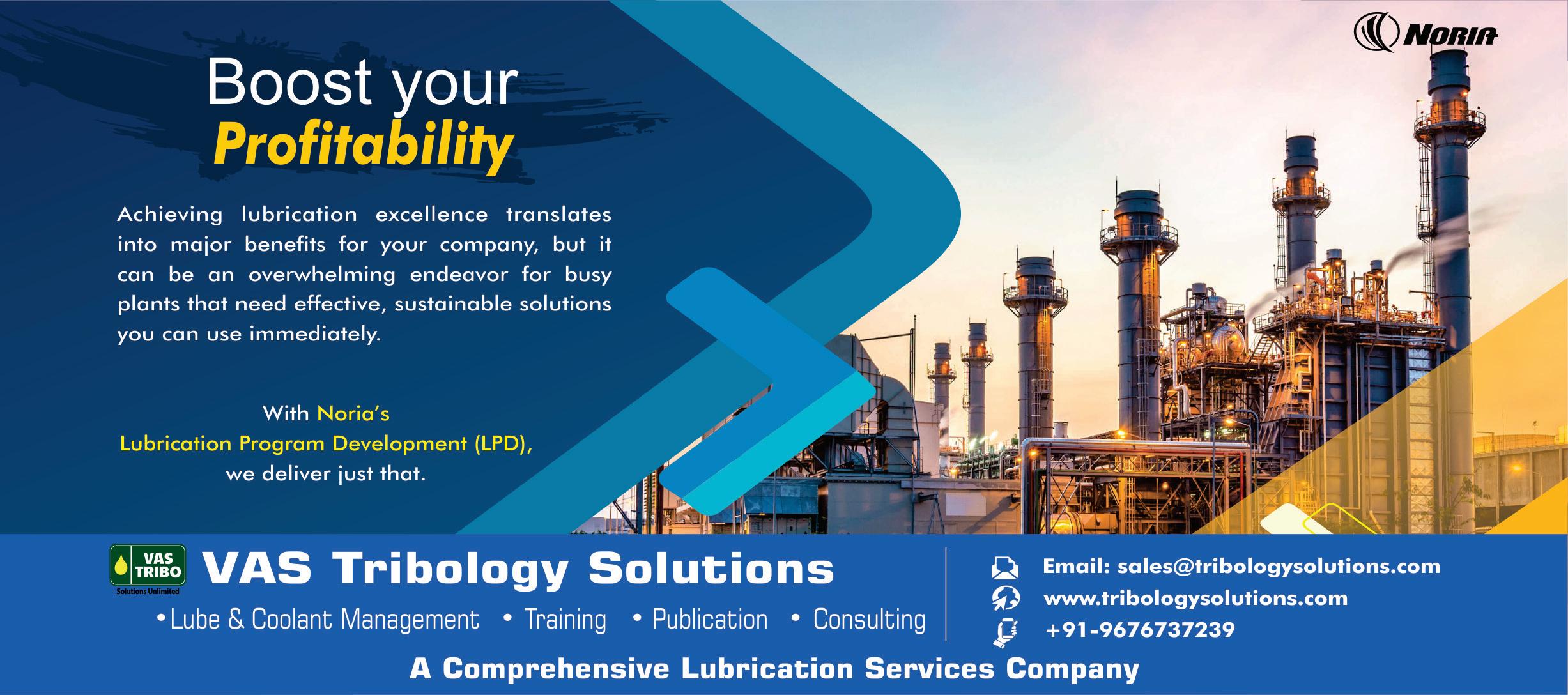
INDUSTRY NEWS

EXXON MOBIL LUBRICANTS INDIA PROMOTES SPORTS IN INDIA
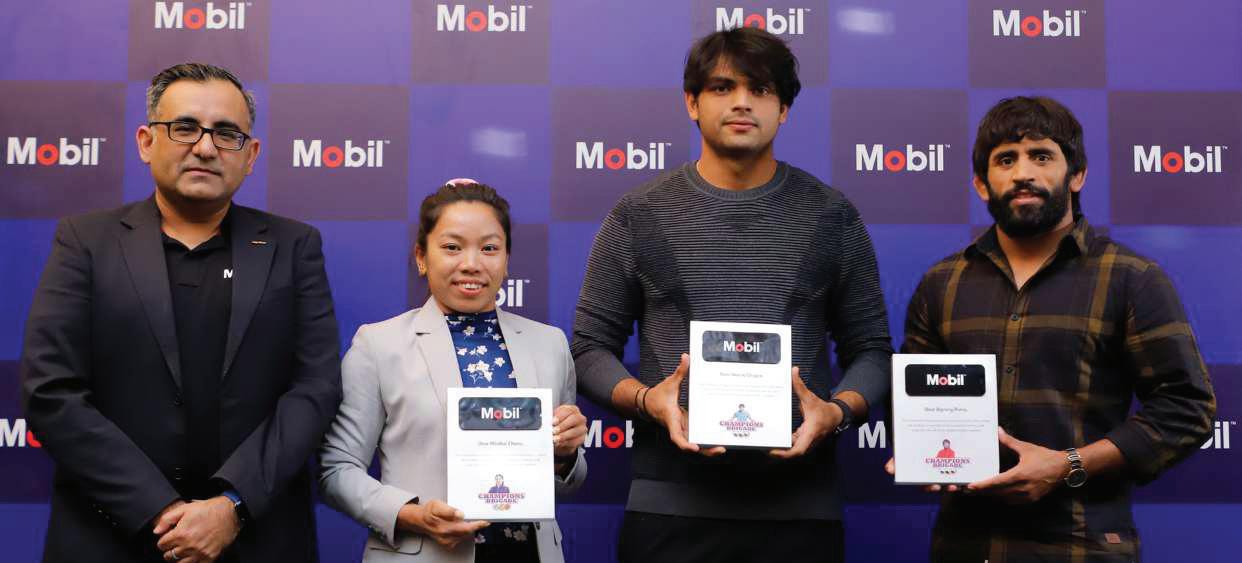
ExxonMobil Lubricants Pvt Ltd announced the renewal of its brand ambassador association with the Tokyo Olympics medallists - Neeraj Chopra, Mirabai Chanu, and Bajrang Punia - for Mobil India. The announcement was made during a gala felicitation ceremony atNew Delhi in the presence of the company's top retailers.
Tokyo 2020 was India's most successful Olympic campaign with a tally of seven medals. While Neeraj Chopra became the first track & field athlete and the second Indian to win an individual Gold medal, Mirabai Chanu isthe first Indian weightlifter to win a Silver. Bajrang Punia, who won a Bronze at the event, is the only Indian wrestler to win three medals at the World Wrestling Championships. A common thread among these sports persons is that they symbolize a powerful story of transformation, rising from humble beginnings to representing India at the Olympics.
Commenting on the development, Deepankar Banerjee, CEO, ExxonMobil Lubricants, said, “We feelextremely proud to renew our brand association with Neeraj Chopra, Mirabai Chanu and Bajrang Punia. Our engagement with them began before they achieved world fame,and hence it gives us immense pleasure to see them become the very best in their respective fields, winning major titles and medals at the Olympics. Like the athletes have made a difference to India and the sport they represent, we too will continue to work hard, building on Mobil's world-class brands, synthetic leadership, and scale to bring trusted, high-quality performance products and solutions to the country.” Speaking during the event, Imtiaz Ahmed,GM-Marketing Deployment, Consumer Marketing, ExxonMobil Lubricants, said, “The three champions personify Farak LaakarDekhiye, what we stand for in India, which is not only our expertise, innovation and performance but also about giving people the confidence to unlock their ambitions for tomorrow. The athletes are a natural fit for us and we couldn't be more pleased to be able to continue our association.”
During the felicitation ceremony, ExxonMobil Lubricants also showcased its latest products,Mobil Super SUV Pro and the Mobil Super Moto2W engine oil upgraded range, which were recently introduced through an advertising campaign featuring Neeraj Chopra, Mirabai Chanu, and Bajrang Punia. ML
TRAINING AND CERTIFICATION
Inhouse training on Practical Industrial Lubrication Orientation Training (PILOT) and Machinery Lubrication Level I training at MCPI Private Limited, Haldia, West Bengal
Lubrication Institute conducted a two- day training on Practical Industrial
Lubrication Orientation Training
(PILOT) and three days training on Machinery Lubrication Level I training for the Engineering team of MCPI Private
Limited, Chemical plant in Haldia, West
Bengal from 10th to 13th November, 2021
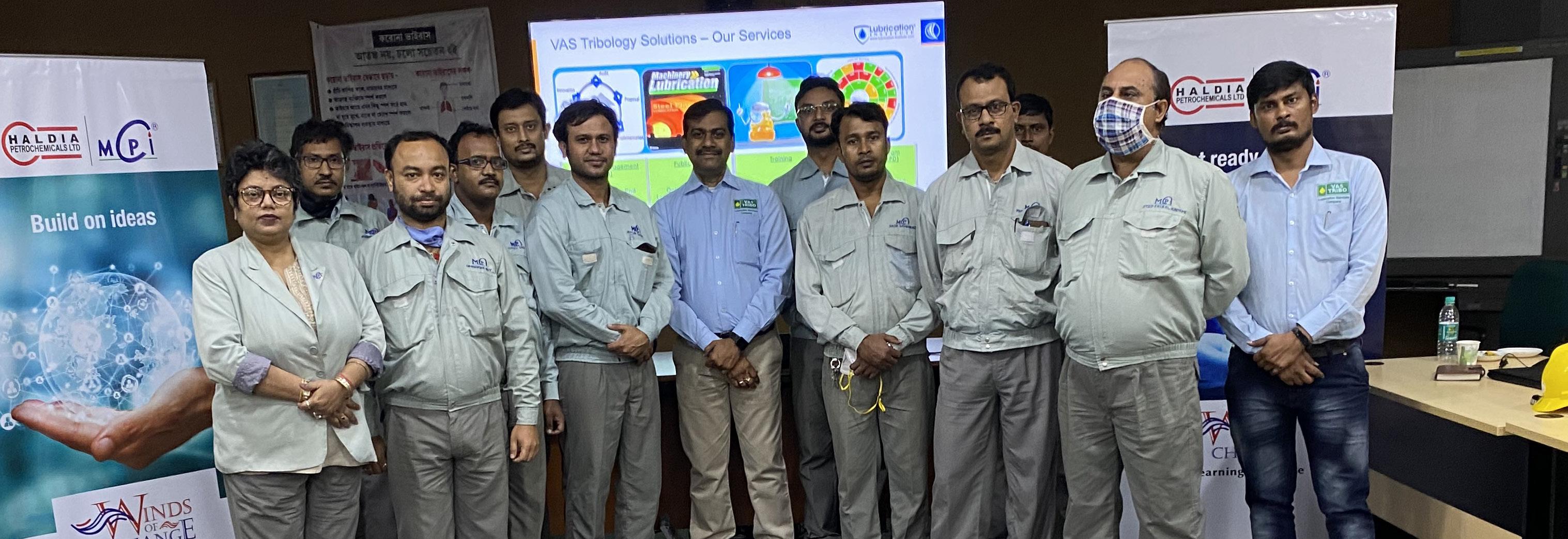
This was on-premise classroom training, fully customized and designed uniquely to support the maintenance and reliability teams in organization. This training helped them realize their full potential and achieve optimal, sustainable outcomes. There was also a post training engagement activity to ensure knowledge retention.
Arunava Das
Manager mechanical, MCPI Private Limited
Saikat Chakraborti,
Senior Executive, MCPI Private Limited
Syed Faisal Hashmi
Manager, Utility, MCPI Private Limited
Somnath Adhikary
Senior Manager, MCPI Private Limited
Tushar Chakraborty
Executive, Electrical, MCPI Private Limited

